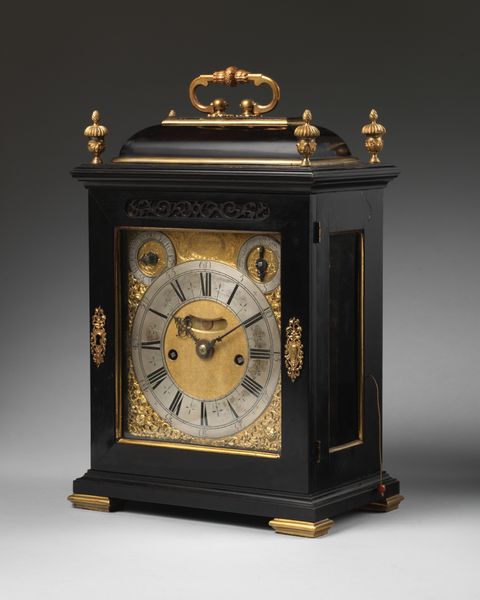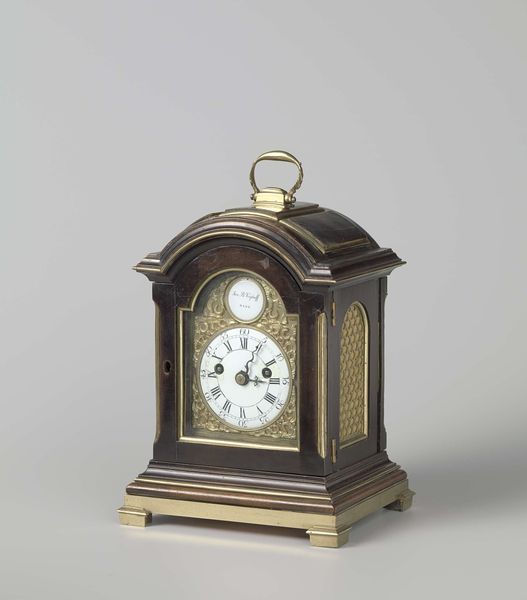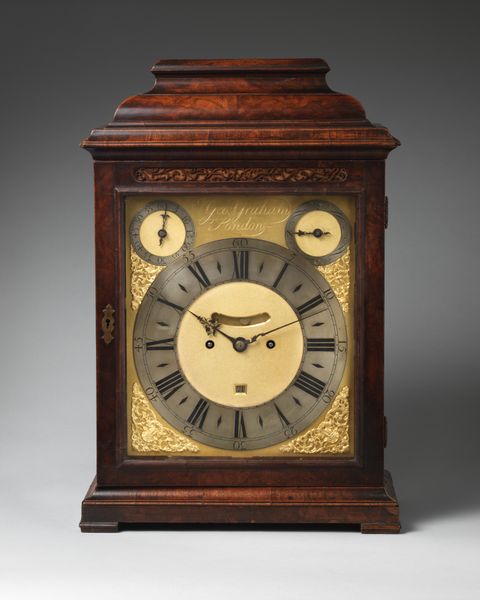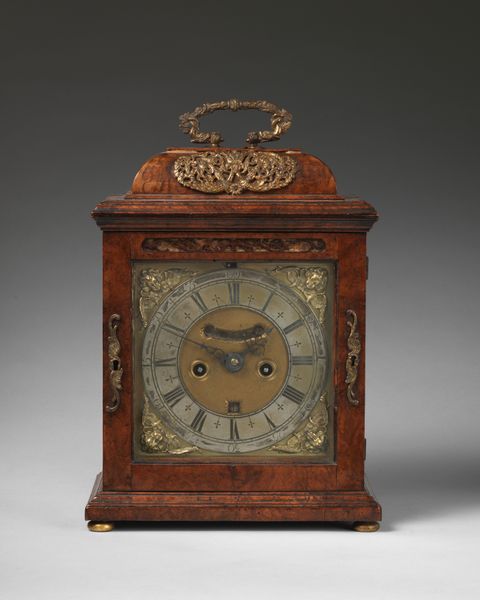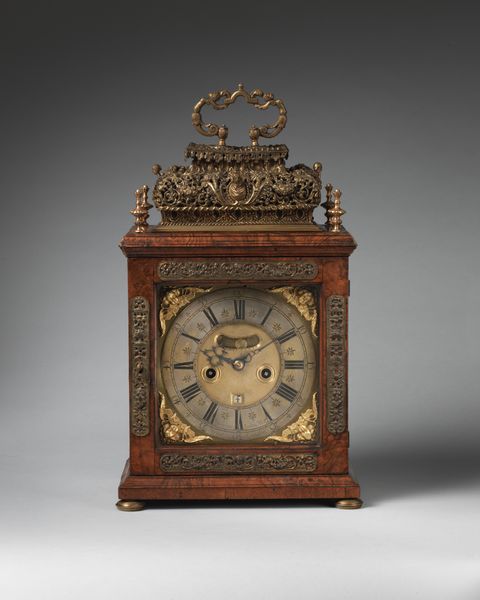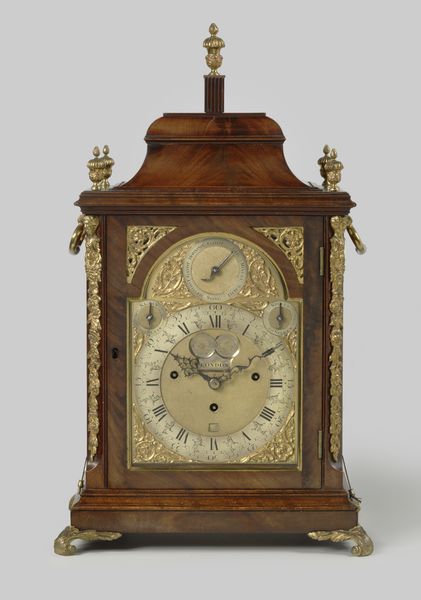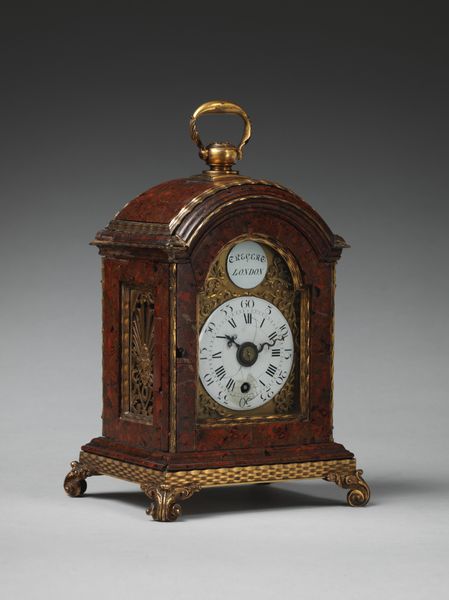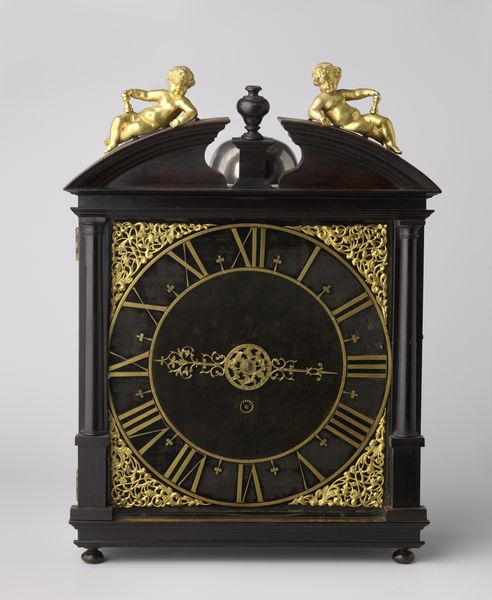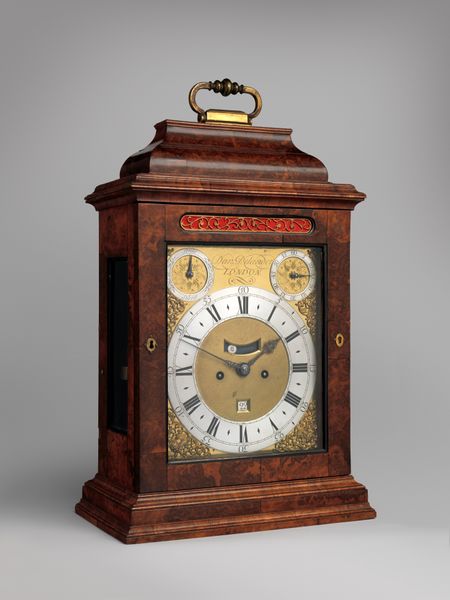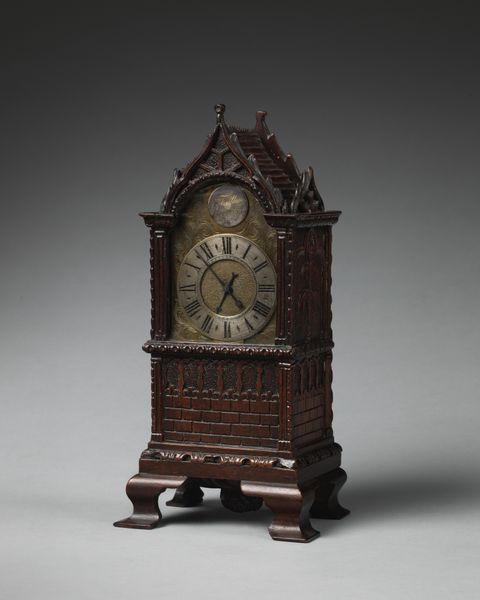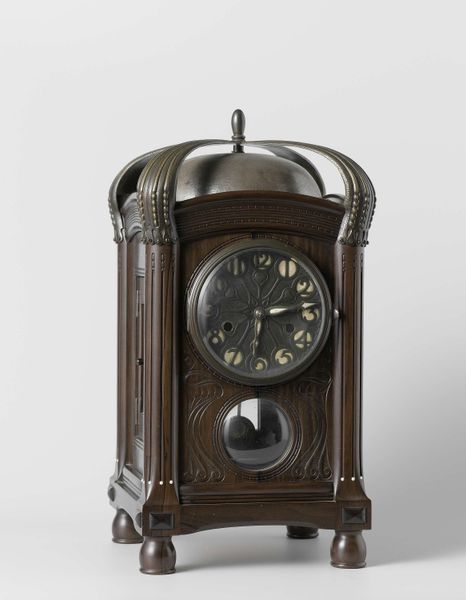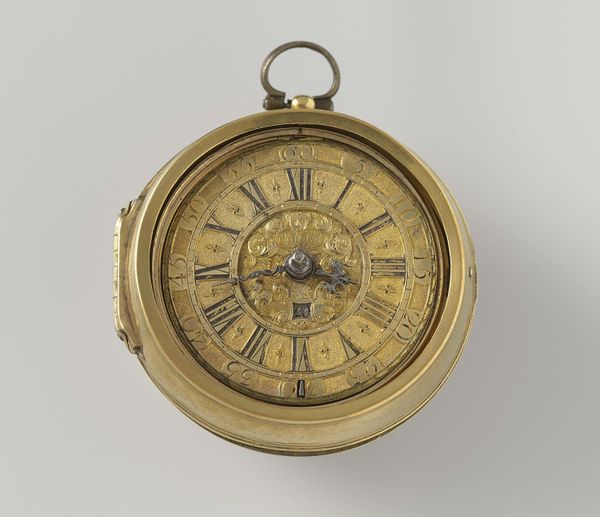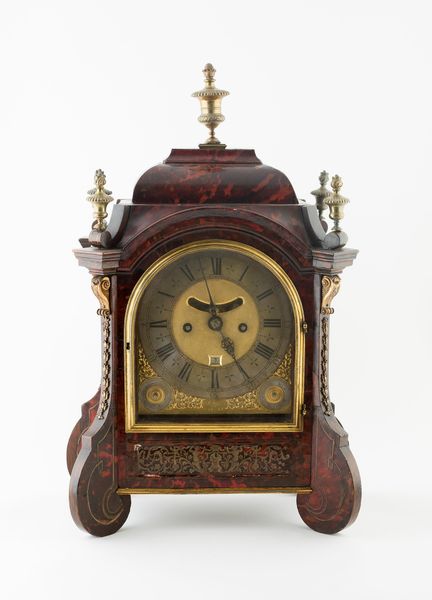
metal, sculpture, wood
#
baroque
#
metal
#
sculpture
#
wood
#
decorative-art
Dimensions: Overall: 16 1/4 × 10 1/2 × 7 in. (41.3 × 26.7 × 17.8 cm)
Copyright: Public Domain
Curator: Here we have a fascinating example of late 17th-century craftsmanship: a table clock, also known as a bracket clock, crafted between 1691 and 1701 and attributed to Thomas Tompion. Editor: My first thought is that this is not merely a time-keeping device, it’s a carefully constructed object elevated by its material value and skillful craft. The density of ebony juxtaposed with the glimmering gilt brass must have conveyed wealth and status. Curator: Indeed. Notice the ebony case, lending a certain gravity. The clock's face is intricately worked with gilded brass, surrounding a silvered chapter ring. The formal composition guides the eye—from the finials atop the case down to the brass feet. Editor: The juxtaposition between the dark, solid wood case and the intricacies of the clock’s face prompts questions. The creation of the dark-stained case and gilded ornamentation are indicative of distinct processes—who were the artisans responsible, and what was the division of labor in its production? Curator: The contrasting textures speak to different aesthetics: the unadorned case contrasting with the ornamentation signifies a mastery of balance. This contrast reinforces a tension of surface and depth inherent in the design. Editor: Right. One cannot ignore the ebony, surely sourced from afar, its presence reflective of England’s mercantile power during that period. We should also recognize the clock’s interior—its mechanical components, often overlooked, symbolize scientific advancement through technical expertise. Curator: Certainly. And there is also the clock’s intrinsic value as an object designed to signify social order. Time, presented with precision, becomes less an abstract idea and more a symbol of man's command over the natural world. Editor: True, and by looking at its construction we uncover the layers of labour, extraction, craft, and wealth which ultimately contribute to this art object as more than merely aesthetic expression. Curator: Precisely. Contemplating the aesthetic impact and historical resonance of an object like this one leads us to think critically about art's relationship with value and society. Editor: For sure. The clock's materials themselves, born from extraction and refined by human hand, ultimately speak volumes.
Comments
No comments
Be the first to comment and join the conversation on the ultimate creative platform.
